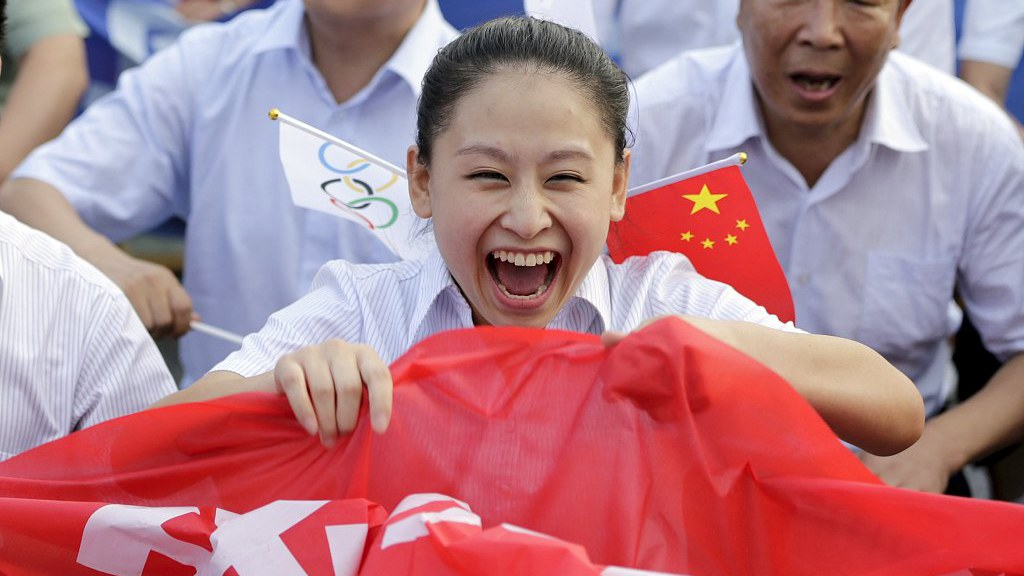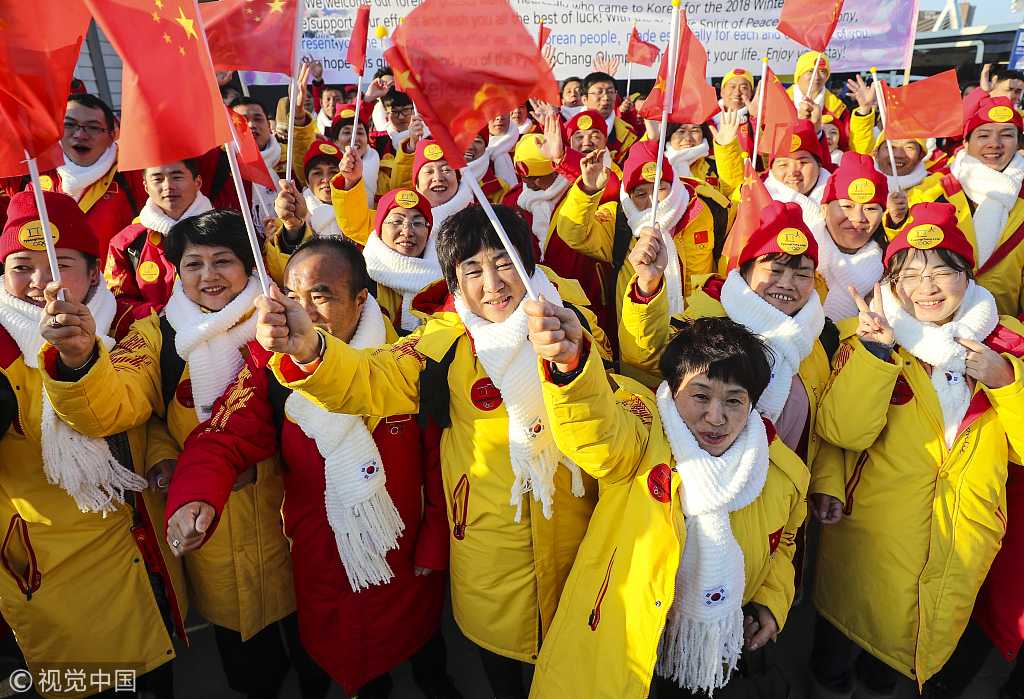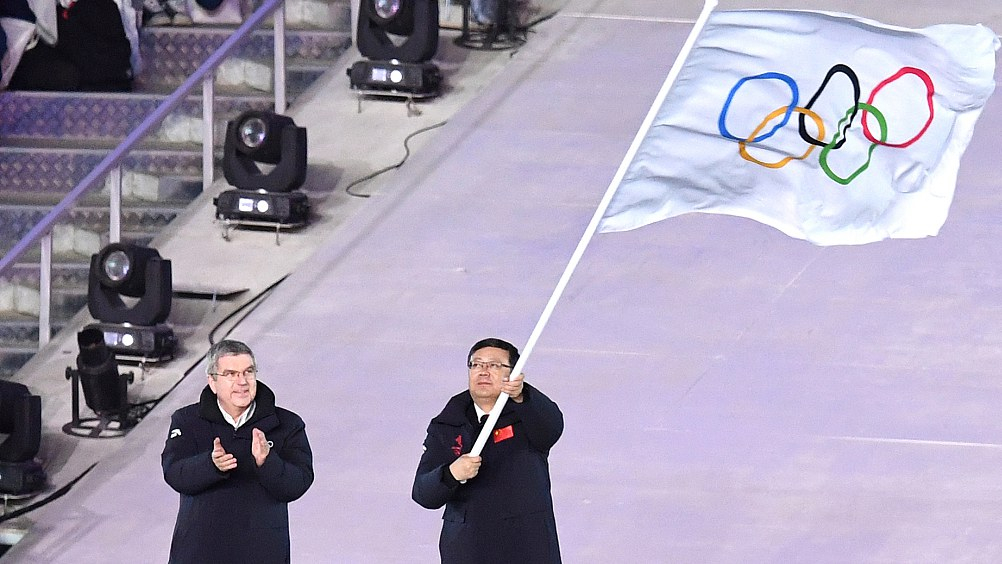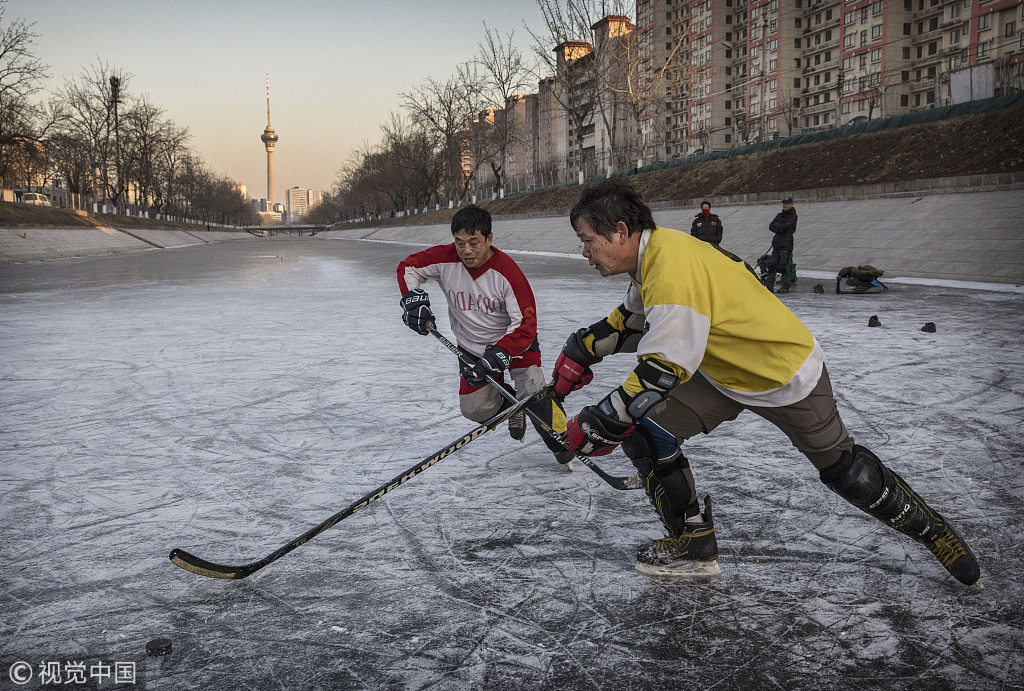
Opinion
15:27, 28-Feb-2019
Beijing Winter Olympic’s journey towards 300 million healthier lives
David Lee

Editor's Note: David Lee is a consultant and author based in Beijing who works on cross-cutting themes of energy, health, international politics, and international development. The article reflects the author's opinion, and not necessarily the views of CGTN.
On the exuberant night of February 25, 2018 at the closing ceremony of the PyeongChang Games, Chinese President Xi Jinping set the global Winter Olympics movement into Beijing mode by extending a warm welcome to friends across the world to Beijing in 2022.
The Olympic movement impacts sports, business, and even world politics. However, as reflected in its motto “Citius, Altius, Fortius,” which is Latin for “Faster, Higher, Stronger,” I believe the Olympic movement at its very core impacts how we as human beings better ourselves mentally and physically; that is, how we become healthier people.
On the first anniversary of Winter Olympics' transferring to Beijing, it's helpful to look back at how health has been incorporated into Beijing's second Olympic journey and how this journey will continue beyond 2022.

Chinese tourists wave their national flag in front of PyeongChang Olympic Stadium in PyeongChang, The Republic of Korea, Feb. 25, 2018./ VCG Photo
Chinese tourists wave their national flag in front of PyeongChang Olympic Stadium in PyeongChang, The Republic of Korea, Feb. 25, 2018./ VCG Photo
Beijing won its bid for the 2022 Winter Olympics in mid-2015. One year later, China launched its flagship Healthy China 2030 Strategy, which laid down the framework for health improvement to benefit 1.4 billion people.
Parallel to these key developments and seizing the opportunity offered by the Beijing Olympics for social mobilization, China's sports regulator unveiled a national plan to cultivate 300 million winter sports enthusiasts across the country.
Not incidentally, the Healthy China 2030 Strategy envisages the number of people that regularly work out to grow from the baseline of 360 million in 2015 to 435 million in 2020 and to 530 million in 2030. China's new-found love for winter sports will help the impressive numbers become true.
Even if you are not sensitive to boring statistics, you'd be inspired, just walking along waterfront parks in winter Beijing, to witness some very lively sporting fun on the icecap. Ordinary citizens are mimicking some rudimentary figure-skating stunts.

Chen Jining (R), the mayor of Beijing, waves the Olympic flag after International Olympic Committee President Thomas Bach passed it to him during the closing ceremony of the Pyeongchang Winter Olympics in Pyeongchang, the Republic of Korea, February, 25, 2018./ VCG Photo
Chen Jining (R), the mayor of Beijing, waves the Olympic flag after International Olympic Committee President Thomas Bach passed it to him during the closing ceremony of the Pyeongchang Winter Olympics in Pyeongchang, the Republic of Korea, February, 25, 2018./ VCG Photo
More athletic kids, with ice-hockey sticks in hand, are experimenting with the newly imported ice hockey game. In Beijing and other affluent Chinese cities, indoor ice hockey rinks are sprouting up in upscale malls, accommodating those well-equipped semi-professional aspirant young players who train throughout the year. All these scenes were seldom seen even a few years back.
Last December, the National Popular Ice & Snow Season, a flagship program run by the country's sports regulator to help cultivate 300 million more healthier lives through winter sports, kicked off in Shanghai.
It marked the first time since its inception five years ago that the season had been launched anywhere south of the mighty Yangtze River. Across China, the effort to promote healthy lives is serious and for real.
Pre-Winter Olympics enthusiasm for health must be sustained. Within the Healthy China 2030 Strategy framework, I see Healthy Lifestyle Action Plan as a credible mechanism to maintain the health momentum beyond 2022.

Chinese men play a game of pick-up ice hockey on a frozen canal in Beijing, China, December 14, 2016./ VCG Photo
Chinese men play a game of pick-up ice hockey on a frozen canal in Beijing, China, December 14, 2016./ VCG Photo
Now in its second stage, China's Healthy Lifestyle Action Plan, as a cross-department program to combine resources from health and sports authorities, among others, has some key mid-term targets to fulfill the coming couple of years leading up to the Winter Olympics.
Beyond 2022, the Action Plan provides meaningful guidelines and milestones to ensure a sustainable health journey.
In all, when China greets the world in 2022, I hope China will inspire not only with top infrastructure and neat operations, but it will also provide an inspiring case of effective social mobilization for health to an increasingly sophisticated global community conscious about health.
(Cover Photo: Local resident Zhang Jing celebrates after Beijing was chosen to host the 2022 Winter Olympics at a square in Chongli county of Zhangjiakou, Hebei Province, China, July 31, 2015./ VCG Photo)
(If you want to contribute and have specific expertise, please contact us at opinions@cgtn.com.)

SITEMAP
Copyright © 2018 CGTN. Beijing ICP prepared NO.16065310-3
Copyright © 2018 CGTN. Beijing ICP prepared NO.16065310-3